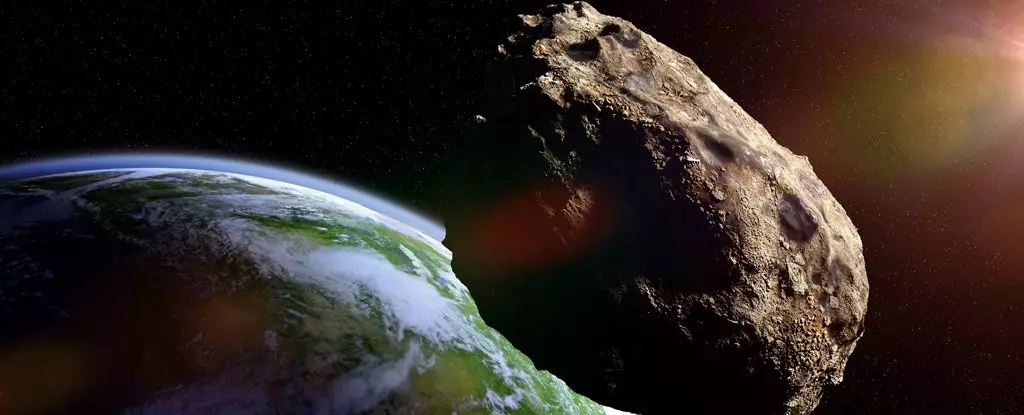In an era characterized by rapid advancements in space exploration and technology, the discovery of potentially hazardous asteroids has become a significant concern for scientists and global space agencies. Currently, Asteroid 2024 YR4, a space rock on a trajectory that may cross Earth’s orbit, has come under scrutiny. With a probability of impact recorded at approximately 1 in 83 within the next eight years, this asteroid has indeed raised alarm bells within the scientific community, leading to a coordinated global response.
The identifier 2024 YR4 reflects a potentially formidable space object being monitored meticulously by the International Asteroid Warning Network (IAWN). Observations suggest that if it indeed collides with Earth, it would do so on December 22, 2032, posing a risk that cannot be overlooked. Although engineers and astronomers, including David Rankin from the Catalina Sky Survey, assert that “the most likely outcome is still a near miss,” the asteroid’s significant size should not be dismissed. Estimated to be between 40 to 100 meters in diameter, its impact could cause devastation spanning up to 50 kilometers from the impact site, threatening communities across various regions.
As a primary step in monitoring this close-approaching object, the IAWN has initiated a framework of international cooperation. The collective approach involves dialogues among numerous space organizations, including NASA, the European Space Agency, and their counterparts worldwide, to assess the trajectory and composition of 2024 YR4. The collaboration aims not only to monitor the asteroid but also to prepare for potential mitigation strategies should the risk actually escalate. “Further observations are critical to understanding the risks and determining a possible course of action,” remarked astronomer Colin Snodgrass of the University of Edinburgh.
Historically, the astronomical community has cultivated advanced telescopic technology to identify threats early. In the case of 2024 YR4, it was first detected on December 27, 2024, using a telescope in Ríos Hurtado, Chile, a part of the comprehensive Asteroid Terrestrial-impact Last Alert System (ATLAS). These observatories continuously scan for celestial objects that may pose a threat to Earth, emphasizing the importance of rapid detection.
The initial risk assessment indicates that there is a little over a 1% chance that the asteroid will make contact with Earth. An intriguing aspect of risk assessment involves the Torino Scale – a descriptive tool used to measure the likelihood of collision. Asteroid 2024 YR4 currently rates a 3 on this scale, signifying it warrants attention but is not an immediate threat. In contrast, the near-Earth object 99942 Apophis previously held a higher rating, only to be downgraded after detailed observations refined its path and eradicated imminent concerns.
Interestingly, as freshly discovered asteroids like 2024 YR4 are initially observed, their paths present a higher degree of uncertainty due to limited data points. Today, the prediction of their trajectory evolves as more observations are accumulated, decreasing potential impact overlaps with Earth in time.
Despite the ability to make projections, scientists face certain challenges, particularly with asteroids that have elongated or eccentric orbits, including 2024 YR4. Its current trajectory appears nearly linear, distancing itself from Earth, thus complicating accurate predictions. As a result, its uncertainty region continues to expand, necessitating continual observation and adjustments.
In the coming week, the Space Mission Planning Advisory Group will convene in Vienna to deliberate on the status of the asteroid. Should the calculated impact risk remain above 1%, specialists will discuss potential recommendations to the United Nations. Options may include deploying missions aimed at deflecting or destroying the asteroid, referencing successful precedents like NASA’s Dart mission.
While many might view the remote chance of collision with asteroid 2024 YR4 as a minor concern, the reality is that continued vigilance is paramount. As our understanding of near-Earth objects grows, so does our capacity to respond effectively to potential threats. The collaborative effort of space agencies around the world manifests a proactive approach that emphasizes the importance of defense against potential cosmic dangers. In an age where humanity is more connected than ever, the global initiative surrounding asteroid monitoring reinforces that safeguarding our planet transcends national borders, driven by shared responsibility to ensure Earth’s safety.


Leave a Reply